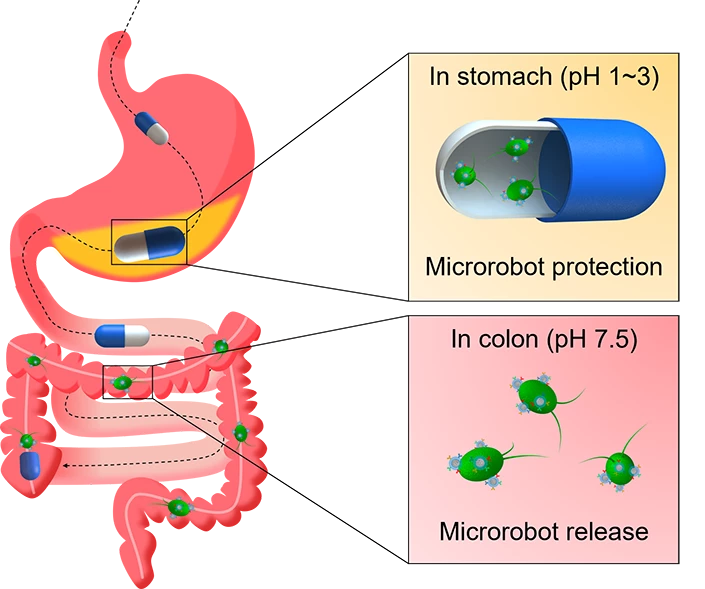If you suffer from inflammatory bowel disease (IBD), a pill full of tiny algae robots may be just what you need. The bio-hybrid microrobots have already been shown to reduce symptoms and promote healing in IBD-afflicted lab mice.
So first of all, just what is inflammatory bowel disease?
Well, it's actually a blanket term for two autoimmune disorders of the digestive tract, namely Crohn's disease and ulcerative colitis. Although the exact cause of these disorders still isn't fully understood, they are believed to occur when the body's immune system improperly reacts to the presence of invading viruses or bacteria.
This flawed reaction causes immune cells known as macrophages to produce excessive levels of inflammation-causing proteins called pro-inflammatory cytokines – this happens within the colon (aka the large intestine). Those cytokines then turn around and bind to receptors on the macrophages, triggering them to produce even more cytokines.
The resulting vicious cycle keeps the colon inflamed indefinitely, causing ongoing symptoms such as diarrhea, rectal bleeding, abdominal pain, fatigue and weight loss. The algae robots are designed to break that cycle.
Created by scientists at the University of California - San Diego, the microscopic bots each take the form of an individual live green algae cell covered in nanoparticles made of a biodegradable polymer. Each of those nanoparticles is in turn coated with macrophage cell membranes.

Patients (would) start by swallowing a capsule full of the microrobots suspended in a carrier liquid. Due to its formulation, the shell of the capsule stays intact in the stomach, and doesn't dissolve until it reaches the neutral pH of the colon. Once this happens, the tiny bots are released.
The algae cells/robots proceed to swim through the colon, thoroughly dispersing themselves throughout the organ. Cytokines in the colon then bind with the nanoparticles on the robots. This happens because the cytokines mistake the particles for macrophages, due to their coating of macrophage membranes.
Because the nanoparticles aren't macrophages, however, they aren't triggered to produce more cytokines. As a result, the cytokine population in the colon gradually gets "used up" by the nanoparticles, thus reducing inflammation and allowing damaged tissue to heal.
When tested on mice afflicted with IBD, the microrobots were found to reduce rectal bleeding, improve stool consistency, reverse weight loss and reduce inflammation of the colon. What's more, the rodents didn't exhibit any side effects. Clinical trials on humans are now being planned.
"The beauty of this approach is that it’s drug-free," said Prof. Liangfang Zhang, who led the research along with Prof. Joseph Wang. "We just leverage the natural cell membrane to absorb and neutralize pro-inflammatory cytokines."
Zhang and Wang previously utilized algae-cell microrobots to treat pneumonia. A paper on their current study was recently published in the journal Science Robotics.
Source: UC San Diego




